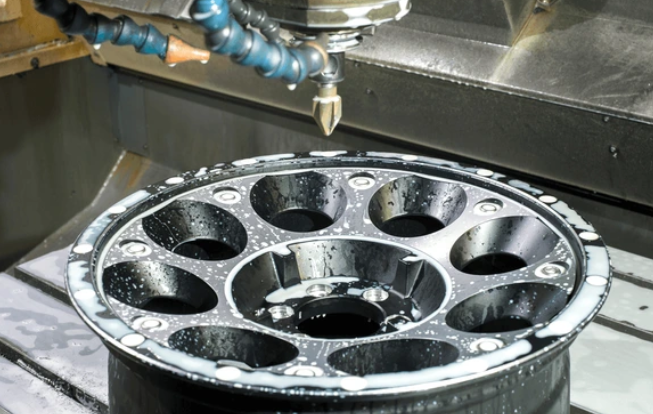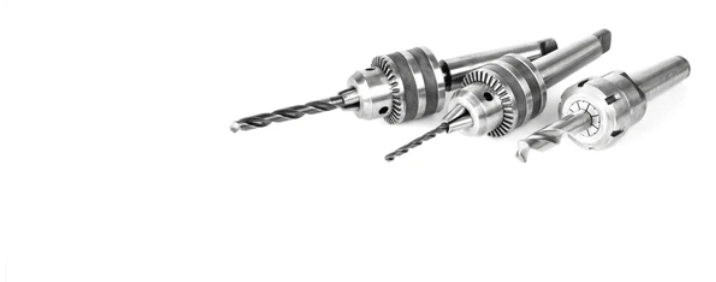Learn the complete process of angle milling—from planning and machine setup to precision machining and quality control. Ideal for manufacturers, engineers, and CNC professionals seeking detailed guidance on angled cuts.
The machining operation of angle milling is an important operation in both manufacturing and the metalworking industry to finish a degree of angle on a workpiece. It is used when the two surfaces you are trying to meet must meet at an angle rather than being parallel or perpendicular. Angle milling is now a mainstay in tool rooms, production shops, and CNC-based environments as it applies to new high-precision components and complex geometry.

It is a very comprehensive guide to angle milling, from planning to final inspection. For example, we will look at the materials used, and how it is different than other milling operations, design considerations, pros and cons, and common alternatives.
What is Angle Milling?
Angle milling is one of the milling processes used in creating an angular surface on a workpiece. Simply, it may face the same surface on the part or may be inclined to the horizontal plane (say 30°, 45°, 60°, and so on). Angle milling does not require a cutter set at right angles to the axis of the milling machine spindle, like face or slab milling, where the tool travels along a horizontal or flat surface.
It can be achieved using:
- Single-angle cutters (for single angles)
- Double-angle cutters (for V-grooves or two-sided angles)
- Tilting worktables or adjustable vises
- Angular movement coordinated programs for CNC.
Process for Angle Milling
Let’s discuss each step in detail.

1. Planning and Preparation
First, check the part design or CAD drawing to find out the required angle and tolerances. Select a single or double angle cutter type according to part geometry. Come to a decision on whether a manual or CNC milling machine is a better option. Finally, determine the machinability of the material so speeds and feeds are set properly.
2. Setting Up the Milling Machine
There should be accurate calibration around the latest milling machine. Securely install the selected angle cutter into the spindle. Positioning can be mounted on any tilting vises or angle fixtures required. For CNC machines, there is a program that is written in such a way that it contains the exact angular path along with the cutting instructions to be given to the controller.
3. Workpiece Setup
Milling works between the firm clamping of the workpiece. Place the surface accurately to the desired angle by using a dial indicator. On CNC milling, especially conduct a test or dry run to check the cutter’s path to avoid errors or collisions.
4. Machining the Angle
A roughing pass of high feed rate is started off with to quickly remove excess material. Finish with a slow speed and high RPM pass to obtain a smoother surface. The heat is managed using coolant to prolong tool life. To achieve deeper or more complex angles, do not perform one deep cut; instead, do multiple shallow cuts.
5. Quality Control
Look and inspect the machined angle visually for surface defects or irregularities. However, accuracy can be verified through the use of protractors, angle gauges, etc, or CMMs. Since the milled angle from the milling operation does not meet the dimensional tolerances, notify the supplier to fix the angle instead of approving the part for use or shipment.
Commonly Used Materials for Angle Milling
The tool wear, speed, and feed rate are all direct functions of the choice of material. Commonly milled materials include:

- Lightweight and easily machinable for high-speed angle milling — aluminum.
- Mild Steel – Common for general-purpose applications.
- Stainless Steel – Requires slower speeds and tougher tools.
- Titanium – Used in aerospace, but challenging due to heat resistance.
- Brass and Bronze – Provide good machinability with excellent finish.
How is Angle Milling Different from Traditional Milling?
| Feature | Traditional Milling | Angle Milling |
| Cutter Orientation | Vertical or Horizontal | Angled to the workpiece |
| Complexity | Simpler paths | Requires angular alignment |
| Setup | Standard fixtures | Tilting vises, angle gauges |
| Applications | Flat surfaces, slots | Chamfers, angular cuts, and dovetails |
| Tools Used | Face, end, slab mills | Angle cutters, double-angle mills |
It introduces complexity in both setup and execution but allows the creation of specialized geometries.
Design Guide for Angle Milling
When working with parts that are being angle milled, keep the following in mind when setting up.
- Ambiguous Notation Avoid: State that angles are horizontal, vertical, or relative to another feature.
- Machining Allowance: Leave extra material for finishing passes.
- Tolerancing: Indicate angle tolerances for critical fits.
- Avoid features that cannot be reached using a standard cutter.
- Angle Cut: Select a larger angle cut to reduce the stress on the cut material.
Advantages of Angle Milling
High accuracy in creating angular geometries from forms.
- Versatility: Supports single and compound angles.
- Clean and smooth with the correct surface finish.
- Custom Features: Enables manufacturing of custom chamfers, bevels, and dovetails.
- Works smoothly with CNC milling systems.

Limitations of Angle Milling
- Complex Setup: Requires precise alignment and fixtures.
- Wear Tools Faster: Angled cuts take numerous cuts to complete the part.
- Manual angle milling requires a skilled machinist.
- It usually involves multiple passes, which tend to extend cycle times longer than standard milling.
- Costly for Small Runs: Due to setup time and complexity.
Alternatives to Angle Milling
However, angle milling is a good technique, but there are many alternatives to the same results based on the application.
CNC Machining
Multi-axis operation is possible in CNC machining because to only requires one fixture when angular features are cut. It decreases human error and increases repeatability.
It is suitable for: Complex and ultra-high accuracy parts in medium to large runs and assemblies.
Grinding
Angular faces can be produced on surface or cylindrical grinding, particularly where the tolerances and surface finish demands require.
Best for: Hardened materials or post-machining finish operations.
Traditional Milling
Traditional milling machines with adjustable angle plates are good for these process tasks, but can also be further adapted with a tilting rotary table.
Best for: Low-cost, small-scale jobs with simple angles.
Applications of Angle Milling
Angle milling is used in industries across.
- Cutting aerodynamic shapes, wing profiles, and brackets.
- Automotive – Manufacturing transmission housings, bevel gears, and engine parts.
- Creating angular surfaces for molds and dies.
- Construction Equipment – Machining structural parts and joints.
- Medical Devices – Producing implants and tools with complex geometries.
Why Choose the Best Manufacturer?
Tops Precision Manufacture is an angle milling project provider with access to the best decades of expertise, state-of-the-art CNC machines, and rigorous quality assurance protocols. Here’s what sets us apart:
- Extensive formability; 4-axis and 5-axis machines with super advanced CNC technology.
- Precision Up to ±0.005 mm: We manage this precision.
- Complex geometries and fixture design: Subject matter expertise in our team focuses on experience with such geometries and fixture design.
- Whether aluminum, hardened steel …. You name it, we’ll handle it.
- Faster Delivery: By using a lean process, we are able to deliver faster without compromising on quality.
- Our team makes sure that all the angular features you require for prototyping or scaling up your production are met.
Conclusion
Angle milling — critical machining technique in the modern world because it allows for the fabrication of intricate parts with high accuracy and smooth finishes. Although it takes a lot of careful setup, planning, and execution, there’s no doubt about the benefits of the method for precision manufacturing. Having gone through several stages from the classical to the modern CNC, the process has yet to be only at the point of meeting current industrial needs. Manufacturers can then make informed decisions regarding materials, methods, and tools to optimize performance and cost.
A trusted partner like Tops Precision Manufacture can help you out in case you need angled cuts with such precision and efficiency, and it is the right solution if your project calls for it.
Frequently Asked Questions
- What is the difference between angle milling and beveling?
Angle milling usually helps remove material and create a precisely angled face with the aid of a milling machine. Edge treatment for weld prep or aesthetics is generally referred to as beveling.
- Is CNC capable of performing angle milling?
There are also CNC machines with 4 or 5 axes, which can perform a lot of complex angle milling operations with high precision.
- What is a double-angle cutter use?
Double-angle cutters are best for dual machining of V grooves or angles from both sides of a surface simultaneously.
- Can we apply angle milling to hard materials?
Sure, but it necessitates tooling, slower feed rates, and sometimes additional operations such as grinding.
- How accurate is angle milling?
A tolerance of ±0.005 mm or better is best for it with proper setup and high-quality machines.


